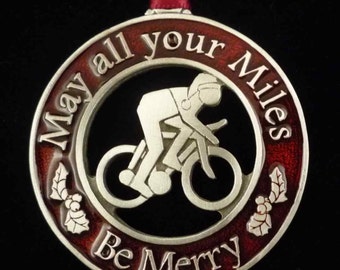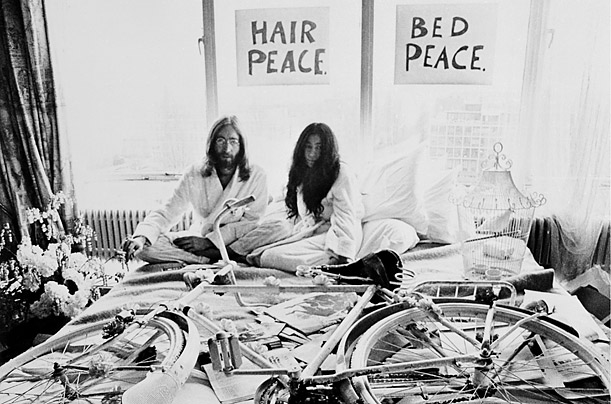People of, ahem, a certain age remember Gene Autry as "The Singing Cowboy." People of my generation know him best for singing "Rudolph The Red Nosed Reindeer."
He brought pleasure to many of us. I can't comment on how much he actually knew about riding herd where the buffaloes roam. However much he knew, I hope it was more than Sylvester Stallone, a.k.a. Rambo, knows about soldiering.
On the other hand, I can say, with some certainty, that he didn't know much about road safety or optics. After all, a red headlight is illegal in most places. It also isn't very effective--or, at least, not as effective as a white or yellow light--for seeing ahead.
To be fair, it's not Autry's fault for miseducating, if inadvertently, a couple of generations of young people. The guilty party is actually Johnny Marks, who wrote the song.
I got to thinking about all of this after reading a news story about a "Santa" who delivers Christmas trees on his bicycle:
He seems to have been born for the job in more ways than one: His real name is Jimmy Rider, and he hauls balsam firs in a custom-made trailer through Boston-area streets at this time of year.
"Every person is happy to get a tree," says Rider, who operates his side business "EverGreen Delivery" out of Ricky's Flower Market in Somerville, Massachusetts. But, as with stand-up comedy, it's not just about the material: The delivery matters. "He does it with such enthusiasm, whether it's snowing or raining, or early in the morning." says proprietor Ricky DiGiovanni, who supplies the trees. "He'll even do it late in the evening. He gets the job done, and he does it with a smile.
During the rest of the year, Rider's main business is delivering goods from farmer's markets and restaurants on his bike. Somehow I imagine he brings good cheer all year round--and that he knows enough not to use a red light in front.
He brought pleasure to many of us. I can't comment on how much he actually knew about riding herd where the buffaloes roam. However much he knew, I hope it was more than Sylvester Stallone, a.k.a. Rambo, knows about soldiering.
On the other hand, I can say, with some certainty, that he didn't know much about road safety or optics. After all, a red headlight is illegal in most places. It also isn't very effective--or, at least, not as effective as a white or yellow light--for seeing ahead.
To be fair, it's not Autry's fault for miseducating, if inadvertently, a couple of generations of young people. The guilty party is actually Johnny Marks, who wrote the song.
I got to thinking about all of this after reading a news story about a "Santa" who delivers Christmas trees on his bicycle:
 |
| On Clarendon Street in Boston, en route to Copley Square |
He seems to have been born for the job in more ways than one: His real name is Jimmy Rider, and he hauls balsam firs in a custom-made trailer through Boston-area streets at this time of year.
"Every person is happy to get a tree," says Rider, who operates his side business "EverGreen Delivery" out of Ricky's Flower Market in Somerville, Massachusetts. But, as with stand-up comedy, it's not just about the material: The delivery matters. "He does it with such enthusiasm, whether it's snowing or raining, or early in the morning." says proprietor Ricky DiGiovanni, who supplies the trees. "He'll even do it late in the evening. He gets the job done, and he does it with a smile.
During the rest of the year, Rider's main business is delivering goods from farmer's markets and restaurants on his bike. Somehow I imagine he brings good cheer all year round--and that he knows enough not to use a red light in front.






















